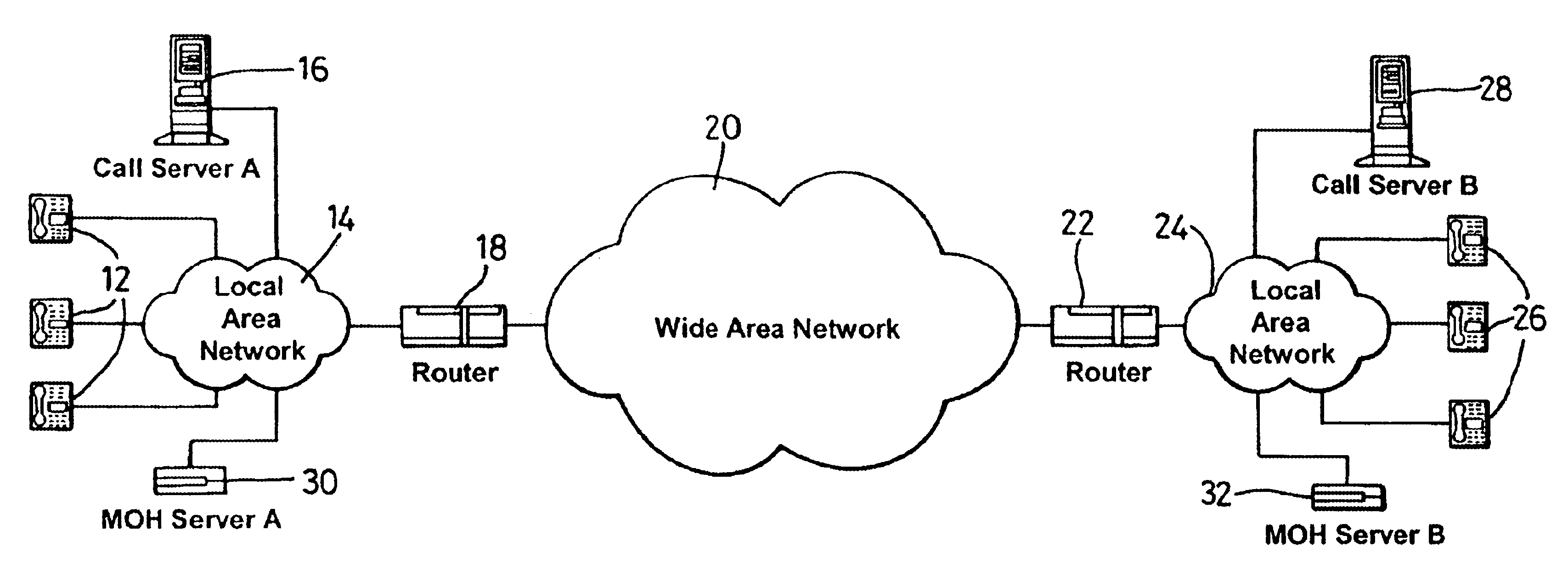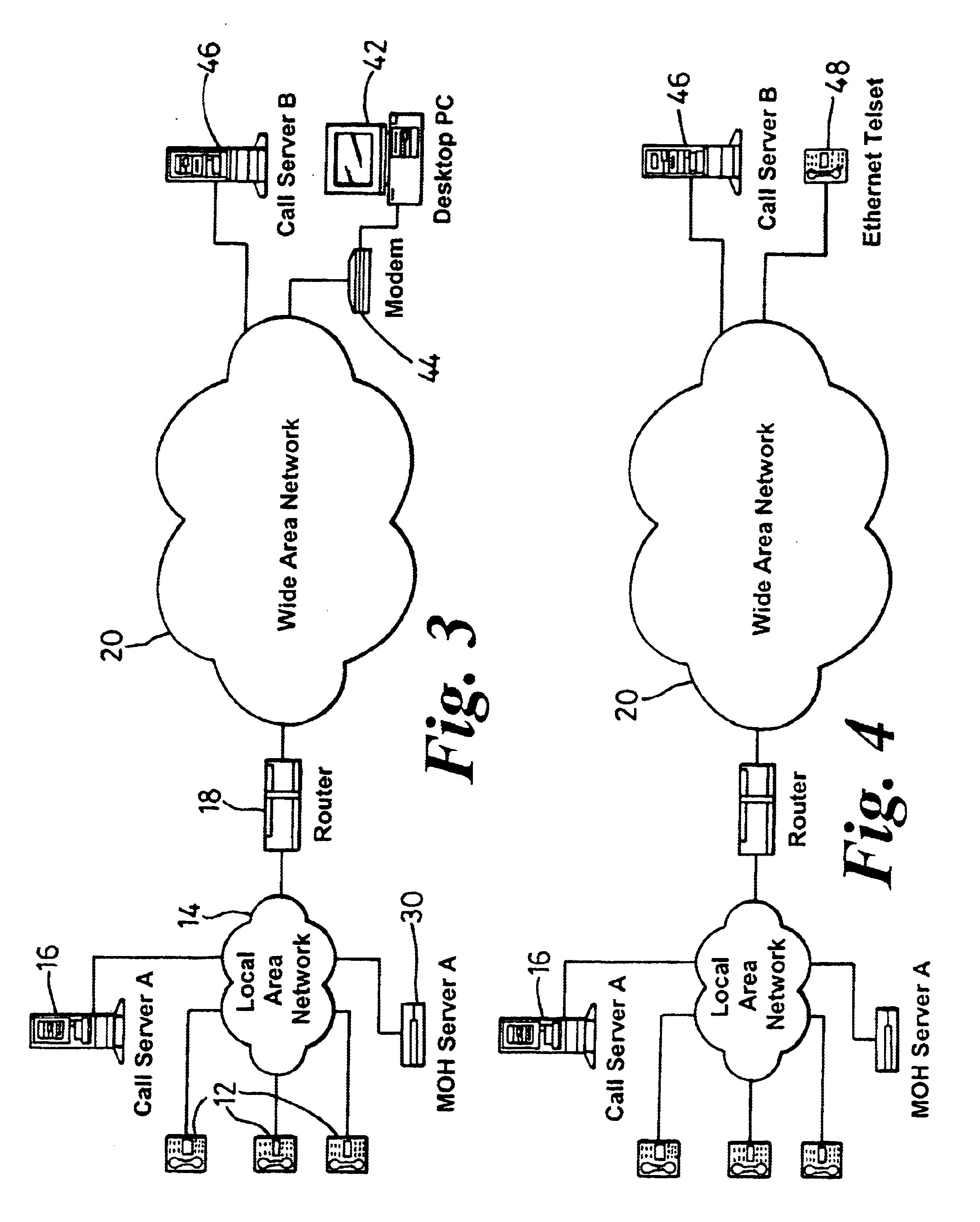Provision of media content to telephony callers on-hold
a technology for telephony callers and media content, applied in telephone service networks, special services for subscribers, interconnection arrangements, etc., can solve the problems of waste of bandwidth to use these codecs for the transmission of moh, unrecognizability of moh delivered to the far-end pbx (where the caller on-hold is located), and unrecognizability of moh by encoding, transmission and decoding
- Summary
- Abstract
- Description
- Claims
- Application Information
AI Technical Summary
Benefits of technology
Problems solved by technology
Method used
Image
Examples
Embodiment Construction
FIG. 1 shows an implementation of the invention in which a plurality of telephony terminals 12 are connected within an intranet environment over a first local area network (LAN) 14. Calls over the LAN and from the LAN to external numbers are made under the control of a first call server 16.
LAN 14 is connected via a router 18 to a wide area network (WAN) 20. The WAN uses the transmission control protocol / internet protocol (TCP / IP) to carry packets between nodes on the network, with router 18 being connected at one such node. A second router 22 is connected at another node and a second LAN 24 is connected to router 22. This LAN also connects a plurality of telephony terminals 26 at a second location under the control of a second call server 28. The first and second call servers may be implemented, for example, by the “Meridian 1” call server available from Nortel Networks, Montreal, Canada.
Each LAN is provided with a music-on-hold (MOH) server 30,32. Traditionally, such MOH servers ar...
PUM
 Login to View More
Login to View More Abstract
Description
Claims
Application Information
 Login to View More
Login to View More - R&D
- Intellectual Property
- Life Sciences
- Materials
- Tech Scout
- Unparalleled Data Quality
- Higher Quality Content
- 60% Fewer Hallucinations
Browse by: Latest US Patents, China's latest patents, Technical Efficacy Thesaurus, Application Domain, Technology Topic, Popular Technical Reports.
© 2025 PatSnap. All rights reserved.Legal|Privacy policy|Modern Slavery Act Transparency Statement|Sitemap|About US| Contact US: help@patsnap.com



